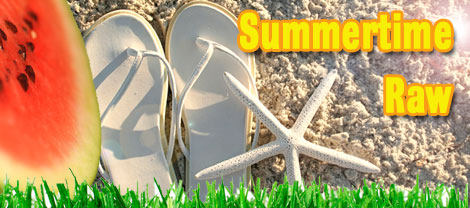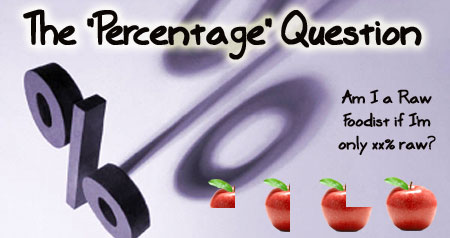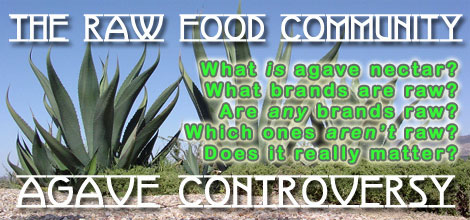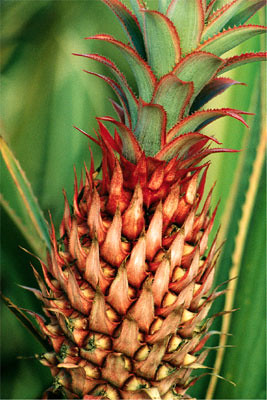
It's day three and all is going okay. I seem to have a bit more energy since it's not all being sapped trying to digest complex meals. The last time I did mono mealing, I received countless emails from Pure Jeevan members who were concerned I was doing something unhealthy. Eating simply for nine days, however, is not unhealthy.
 Did you know the body doesn't need a full range of vitamins and minerals at each and every meal? Somehow many of us were taught that each meal needs to be a complete balance of vitamins, minerals, proteins, fats, carbohydrates and that just isn't the case. What the body needs is a well-rounded diet, overall, to be in a balanced state. If, over the span of a month or two, you've consumed a variety of fruits, vegetables, nuts, seeds, and sprouts you will find that you've met just about all of your nutritional needs.
Did you know the body doesn't need a full range of vitamins and minerals at each and every meal? Somehow many of us were taught that each meal needs to be a complete balance of vitamins, minerals, proteins, fats, carbohydrates and that just isn't the case. What the body needs is a well-rounded diet, overall, to be in a balanced state. If, over the span of a month or two, you've consumed a variety of fruits, vegetables, nuts, seeds, and sprouts you will find that you've met just about all of your nutritional needs.

When you get into raw foods, one thing you're probably going to notice from time to time is that others are "concerned" about your health. This is hugely ironic -- not only because it's likely your own concern about your own health that brought you to raw in the first place, but because you most likely hold the conviction that the raw food diet (or some close variant of it) represents the most healthy dietary regimen available for humans.
Nevertheless, you'll receive a lot of concern. You'll receive it even when you have that "raw glow" and are looking and feeling better than you have in years! The main concerns:

Happy Summer Solstice!
Well, it's officially summer here! This time of the year is extra special to us now that we're healthier. Not only is there an abundance of fresh, local organics to eat, but the sun also shows itself to us a lot more (Pittsbugh is ranked as one of the places experiencing the least amount of sunshine per year). The sun actually used to make me feel physically ill (I wrote a bit about that in an earlier post), but ever since I've switched to a raw vegan diet I find myself drawn to the healing sunshine.
Before switching to a raw lifestyle, we used to go on a lot of outings (picnics) and we'd also go camping. I remember a friend voicing concern when my diet was beginning to change to raw foods. She felt I wouldn't be able to go camping anymore and that things like picnics wouldn't be fun for someone eating a raw food diet. She thought I'd need access to a refrigerator in order to keep all my raw foods fresh and a kitchen where I could prepare the delicious foods she had been seeing me eat.
Read more: Summertime Raw (Video): Out the Door in 10 Minutes!
Can you believe it's mid-October already ? Here in Pittsburgh, for those lucky few who may have fig trees, that means harvest time! Well, almost. Take a look at this video we made about figs!
As stated in the video, we did a previous installment on figs in our Know Your Food series (which will definitely be returning once we finally sell our home and become full-time raw food inspiration providers!). Please visit that link for nutrition and other information on figs.

Jim here... "Do I Need to Eat a Certain Percentage of Raw Foods to Call Myself a Raw Foodist " This seems to be a common question among some people interested in pursuing a raw and living foods lifestyle. I fielded such a question recently online, and thought I'd recap my own answer here, somewhat edited for enhanced clarity:
I know what raw foodism means. And, if you're here, you probably do to, or at least you're interested in it and know the basics. But, to the mainstream population, raw is absolutely unheard of, totally out of the box -- relatively speaking. So, let's begin by taking a look at who in the world has potentially heard of RAW. Let's start more broadly and then hone in.
Read more: Do I Need to Eat a Certain Percentage of Raw Foods to Call Myself a Raw Foodist?

Within the raw food community, a controversy seems to have been brewing for the better part of a year! The topic: Agave nectar (also called agave syrup). Surely by now most people know what agave nectar is. For anyone who doesn't, it's a thick liquid sweetener made from, you guessed it, the agave plant.
In general, the production of tasty agave nectar involves heating the plant to a certain temperature (which varies widely according to which manufacturer is making it and which species of agave is used). The extent of this heating constitutes a significant part of the controversy (as most raw foodists believe that heating any food over a certain temperature, usually somewhere between 105 and 118 degrees fahrenheit, renders it "dead").
Read more: Pure Jeevan Explores the Raw Food Community's Agave Nectar Controversy

Organizing the 3-Day Raw Food Spiritual Ashram Retreat has brought with it the bonus of meeting some fantastic people and the opportunity to learn about their amazing raw food snack companies.
Any botanists or kale experts in our readership ? Take a look:
Even though it's not time to share everything with you about the life-changing events going on with us here at Pure Jeevan, I'm going to try harder to squeeze in a few minutes once in a while to update this blog with other information. I miss coming here and connecting with all of you. Thank you for so many lovely emails that you've been sending to me. I will be responding to all of you very soon. Please forgive me for taking so long to respond, but once we fill you in on everything that's been going on, I think you'll understand that it's difficult to find time to keep up with email and blog writing, among other things.
The latest news, as far as raw foods go, is that I'm having a love affair with a particular fruit. When I was transitioning to raw foods over two years ago, and also during the first few months of eating 100% raw foods, I was in love with young Thai coconuts. I couldn't get enough of them and they did some amazing things for my body---the most amazing was lowering my cholesterol to a healthy range within one month! After many months of consuming at least one coconut per day, however, my love affair ended. I still loved those Thai coconuts, but they just weren't as attractive to me anymore.

Before we moved to Portland, Oregon, land of all things fresh and organic within walking distance, we had to drive quite a distance to reach the food co-op (the only place that had a good selection of organic produce and other raw food necessities). So, we only went shopping about once a week. It took a lot of trial and error to find ways to keep our weekly produce fresh for about a week.
We learned which fruits and vegetables stay fresh the longest, and which go bad the fastest. Based on this, we stocked the refrigerator accordingly (and used up the produce accordingly, as well). The fruits and veggies that stayed fresh the longest were stored in the backs of the shelves (things like carrots, beets, broccoli, cauliflower, apples, etc.). Next we stored the greens that lasted a pretty good amount of time (like kale and collards). And in the front of the shelves and in the door, we stored the more delicate greens (like lettuces and herbs).





